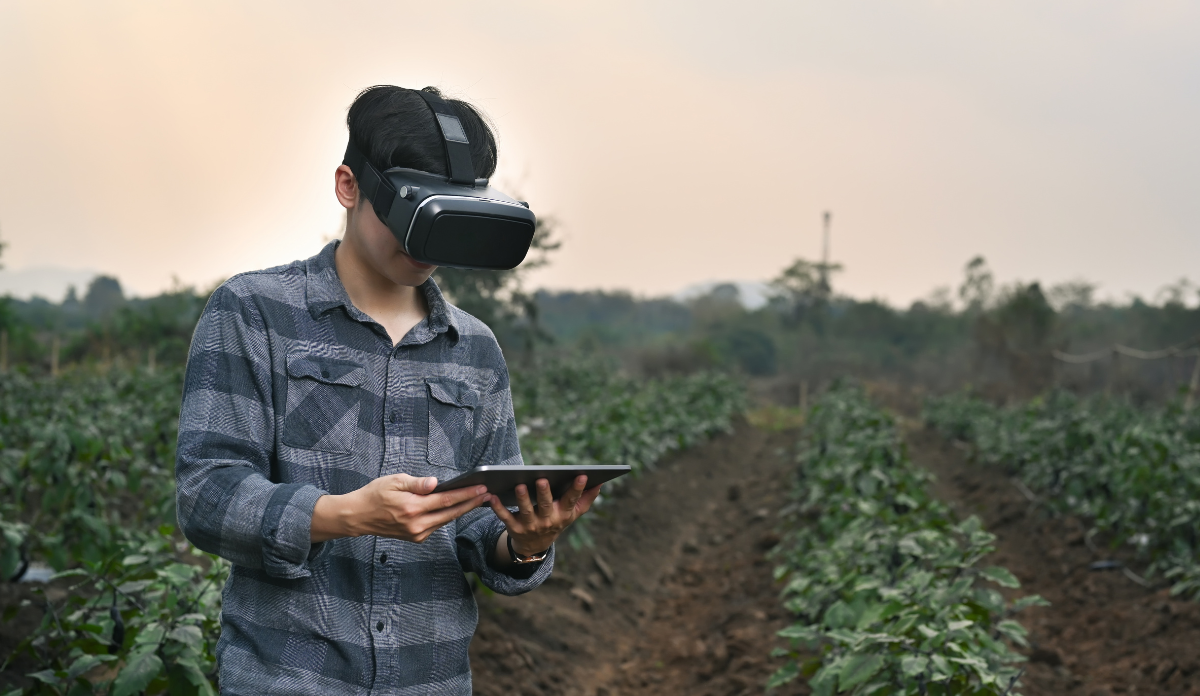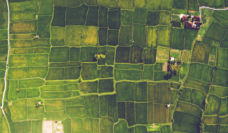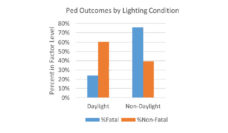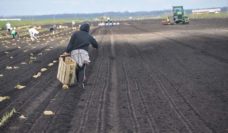If Grant Wood’s American Gothic farmer lived today, he would surely exchange his iconic hayfork for a state-of-the-art hybrid planter.
The United States’ 350 billion dollar agriculture industry has become highly mechanized, and it yields over 650 million tons of food and goods. Rising labor costs have caused many growers to turn toward tech, and traditional ladders and baskets are giving way to hydraulic platforms, mobile conveyor belts, and massive tractors.
These changes help reduce physical demands and create faster crop yields. But the powerful and efficient use of machinery (e.g. tractors, combines, bailers) is also creating hazardous working conditions for the 2.1 million farm workers in the U.S. The high-risk exposure to farming equipment (alongside long hours, harsh weather conditions, and exposure to harmful chemicals) makes this job one of the most dangerous occupations in the country. Farming has a 5 times higher death rate compared to other workplaces at 20 deaths per 100,000 farmers.
Most on-the-job injuries and deaths are attributed to transportation incidents (i.e. tractor overturns, crashes, and amputations). Tractors are the leading cause of agricultural workplace accidents, responsible for around half of farm worker deaths. Injuries are historically underreported, but at least 18,000 injuries were recorded in 2020 alone.
To help lower these risks, new farm interventions are being tested and implemented. A group of agricultural educators, computer scientists, and communication specialists recently came together with innovative strategies for safety using simulated 3-D environments. VRISE and ARISE (Virtual/Augmented Reality Intervention for Safety Education) are agricultural safety education programs that educate users on how to appropriately operate dangerous farming equipment.
Integrating virtual reality technology as a method of education incorporates a middle-ground between traditional methods of learning, training, and real-time experiences.
Wearing a headset, users experience a program that presents different risky farm accidents (e.g. getting run over by a tractor, avoiding a tractor rollover, or falling off a vehicle) using immersive media. After the intervention, users felt that the virtual reality component of their education created a sense of presence that could not have been achieved through traditional and passive education programming. The physicality of the experience allowed users to exercise their bodies and minds during the simulation, strengthening cognitive factors and building better memory retention. Most importantly, users were able to vividly and tangibly perceive risk through these immersive experiences. In doing so, they gained a more complete understanding of potential harms and what preventative measures are necessary around dangerous equipment.
Both VRISE and ARISE focused recruitment efforts on youth. The agricultural industry is particularly dangerous for children, with more young worker deaths than any other industry. About 900,000 farm workers are under 20 and live at the farm where they work. Since 90% of farms in the U.S. are family-run, children and youth injury is endemic to farming culture.
Virtual reality has become more popular and is used enthusiastically by younger generations. Yet as virtual reality technology expands, it will be particularly useful for older farm workers. In 2021, 65% of deaths occurred among those over age 55, and the average age of farm workers is on the rise, from 35.8 in 2006 to 39.5 in 2019.
Safety education is essential for farm workers and their families. Integrating virtual reality technology as a method of education incorporates a middle-ground between traditional methods of learning, training, and real-time experiences. Expanding the opportunity to train up farm workers to be careful around perilous equipment invites fewer accidents, more adept users, and a culture of safety.
Photo via Getty Images














